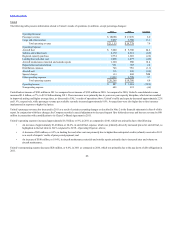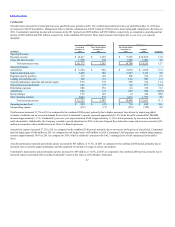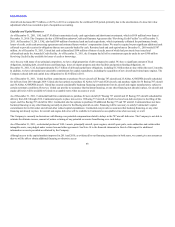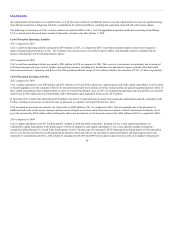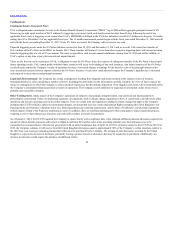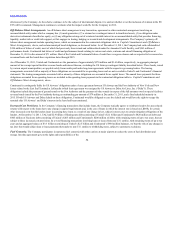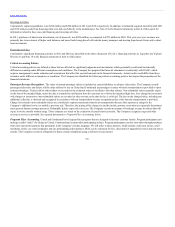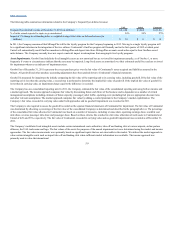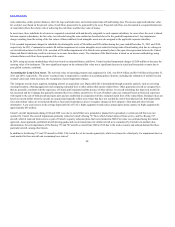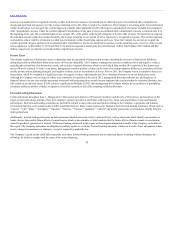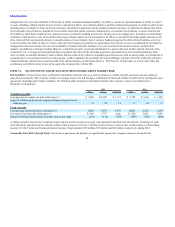United Airlines 2011 Annual Report Download - page 57
Download and view the complete annual report
Please find page 57 of the 2011 United Airlines annual report below. You can navigate through the pages in the report by either clicking on the pages listed below, or by using the keyword search tool below to find specific information within the annual report.
Table of Contents
Investing Activities
Continental’s capital expenditures were $236 million and $300 million in 2011 and 2010, respectively. In addition, Continental acquired aircraft in both 2011
and 2010 with proceeds from financings that were delivered directly to the manufacturer. See Note 18 to the financial statements in Item 8 of this report for
information related to these non-cash financing and investing activities.
In 2011, purchases of short-term investments, net of proceeds, was $629 million, as compared to $273 million in 2010. This year-over-year variance was
primarily due to investment of higher cash balances and more funds being placed with outside money managers and moving liquid assets from cash to short-
term investments.
Financing Activities
Continental’s significant financing activities in 2011 and 2010 are described in the above discussion of UAL’s financing activities in
and Note 14 to the financial statements in Item 8 of this report.
Critical accounting policies are defined as those that are affected by significant judgments and uncertainties which potentially could result in materially
different accounting under different assumptions and conditions. The Company has prepared the financial statements in conformity with GAAP, which
requires management to make estimates and assumptions that affect the reported amounts in the financial statements. Actual results could differ from those
estimates under different assumptions or conditions. The Company has identified the following critical accounting policies that impact the preparation of the
financial statements.
Passenger Revenue Recognition. The value of unused passenger tickets is included in current liabilities as advance ticket sales. The Company records
passenger ticket sales and tickets sold by other airlines for use on United and Continental as passenger revenues when the transportation is provided or upon
estimated breakage. Tickets sold by other airlines are recorded at the estimated values to be billed to the other airlines. Non-refundable tickets generally expire
on the date of the intended flight, unless the date is extended by notification from the customer on or before the intended flight date. Fees charged in association
with changes or extensions to non-refundable tickets are recorded as other revenue at the time the fee is collected. The fare on the changed ticket, including any
additional collection, is deferred and recognized in accordance with our transportation revenue recognition policy at the time the transportation is provided.
Change fees related to non-refundable tickets are considered a separate transaction from the air transportation because they represent a charge for the
Company’s additional service to modify a previous sale. Therefore, the pricing of the change fee and the initial customer reservation are separately determined
and represent distinct earnings processes. Refundable tickets expire after one year. The Company records an estimate of breakage revenue for tickets that will
expire in twelve months without usage. These estimates are based on the evaluation of actual historical results. The Company recognizes cargo and other
revenue as service is provided. See separate discussion in below.
Frequent Flyer Accounting. United and Continental have frequent flyer programs that are designed to increase customer loyalty. Program participants earn
mileage credits (“miles”) by flying on United, Continental and certain other participating airlines. Program participants can also earn miles through purchases
from other non-airline partners that participate in the Company’s loyalty programs. We sell miles to these partners, which include credit card issuers, retail
merchants, hotels, car rental companies and our participating airline partners. Miles can be redeemed for free, discounted or upgraded air travel and non-travel
awards. The Company records its obligation for future award redemptions using a deferred revenue model.
56


